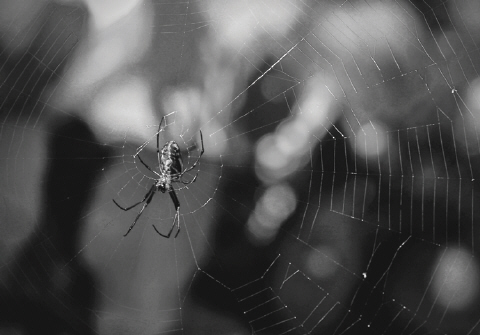Orb-Weaving Spiders, Elephant Seals, Men, And Women: A Biological Survey And Theological Reflection On Sexual Dimorphism -- By: Craig M. Kline
Journal: Eikon
Volume: EIKON 03:1 (Spring 2021)
Article: Orb-Weaving Spiders, Elephant Seals, Men, And Women: A Biological Survey And Theological Reflection On Sexual Dimorphism
Author: Craig M. Kline
Eikon 3.1 (Spring 2021) p. 6
Orb-Weaving Spiders, Elephant Seals, Men, And Women: A Biological Survey And Theological Reflection On Sexual Dimorphism
MD FACS
General Surgeon, Southwestern Medical Clinic
St. Joseph, MI
Introduction
We seldom appreciate the biologic diversity and complexity of our world. Our lives, and even much of the biblical narrative itself, grow upon a lattice of biology. A survey of this fascinating biological framework allows for reflection on the specific ways God ordered living things and how this shapes our understanding of the universe, reality, and even the Godhead itself. In considering the diverse processes in which life survives, interacts, and reproduces, we realize the ways in which life can do these things are quite broad. In judging mankind’s place in this diversity, men and women seem more specific, peculiar, and interesting. Why did God create life exactly the way he did? Why did God create humans as male and female and not in other forms? Why did he create these genders specifically as we find men and women, and not something different altogether?
After a brief survey of the biology of reproduction and gender, we will consider humanity’s place within this biological spectrum, the specific nature of sexual dimorphism1 in humans, and reflect theologically on the peculiar nature in which men and women are created, how they relate, and how this dimorphism reflects the image of God.
Eikon 3.1 (Spring 2021) p. 7

Life Created To Reproduce
Before considering the ways life reproduces, it is fascinating to consider at a more fundamental level that God intended life to replicate. Surely, the need for reproduction stemmed from a desire to fill an earth devoid of life, and to replace organisms that would pass away through events proceeding from the Fall (e.g., disease, trauma, aging, and even being consumed by other organisms for food). Beyond this, however, the biological cycle of reproduction, growth, and death is essential to understanding the nature of God and his redemption of mankind. When we witness new life created, we are amazed at the complexity of life that
Eikon 3.1 (Spring 2021) p. 8
could only proceed from a Creator. Death reminds humans of ultimate judgment for sin. Our biological constraints are in sharp contrast to a God who never suffers change or death. Our very conception contrasts with a God who was never created. Biology provides the language for Paul to refer to our unregenerate state as being “dead in the trespasses and sins” in which w...
Click here to subscribe
